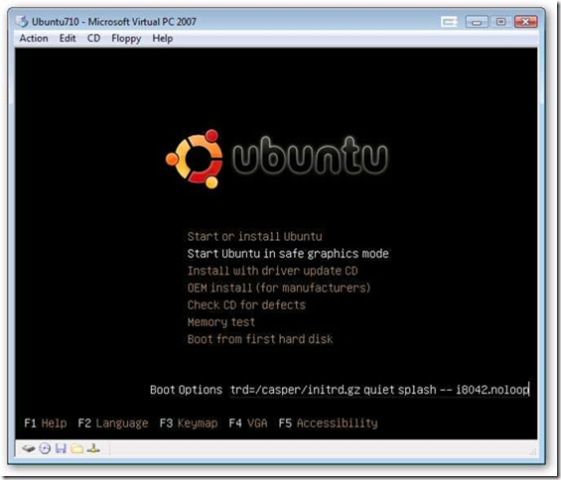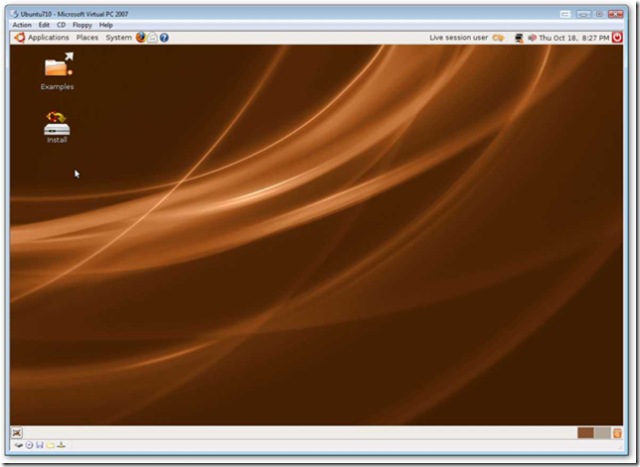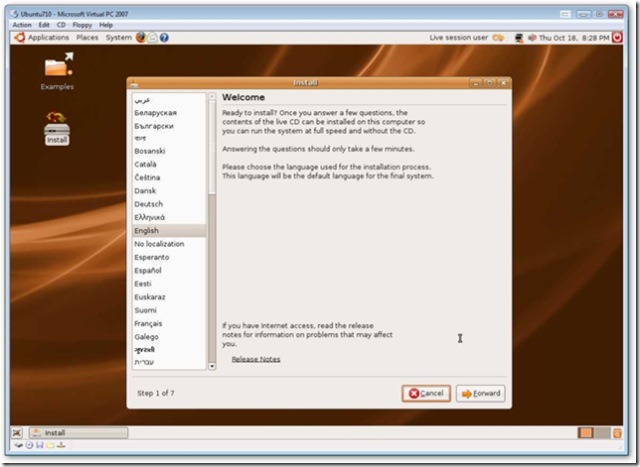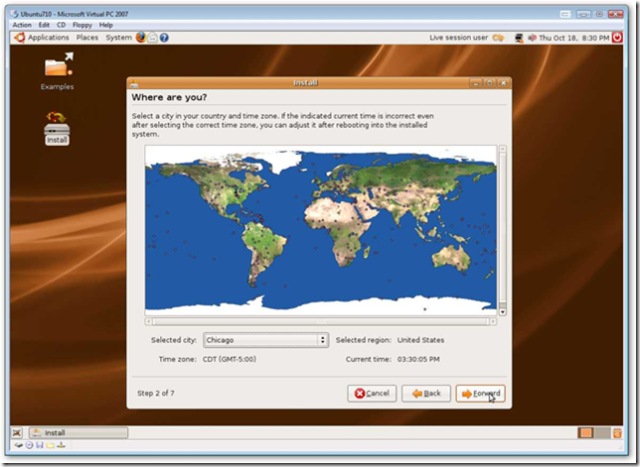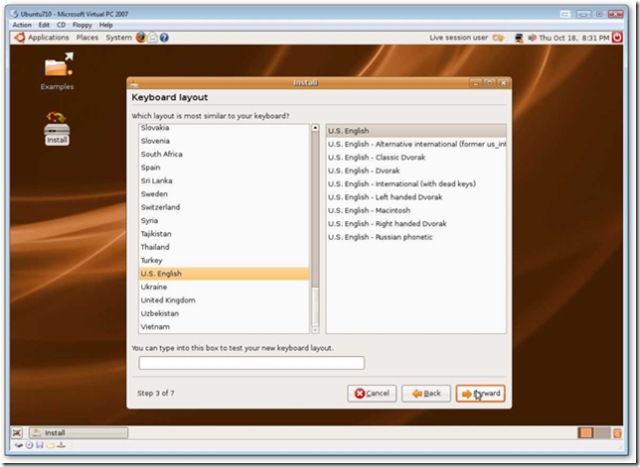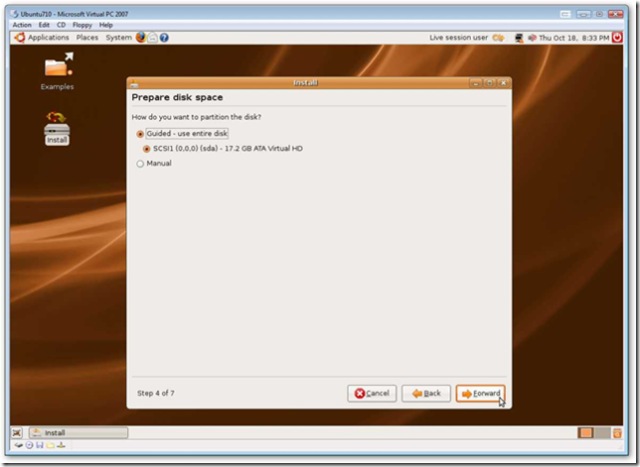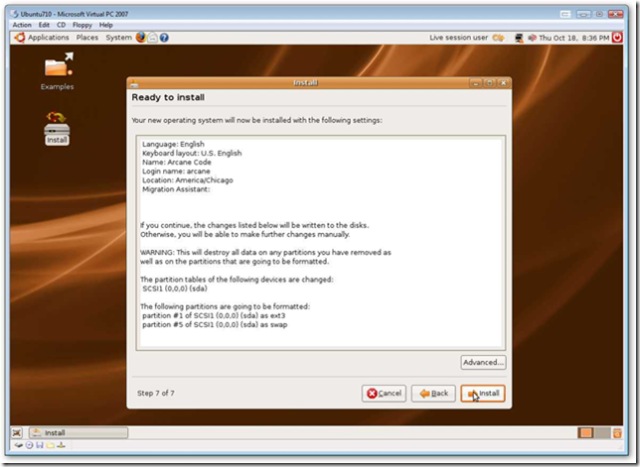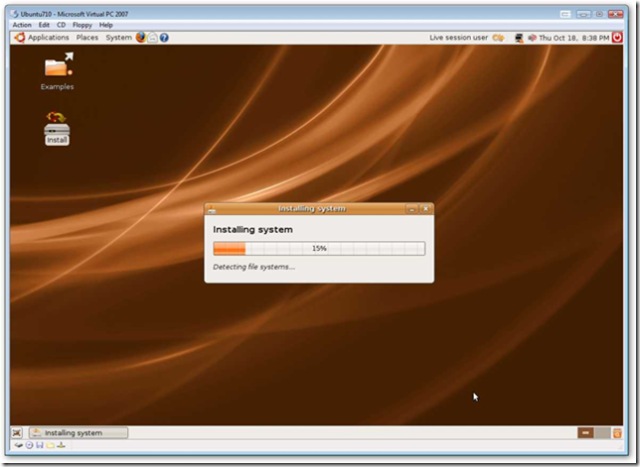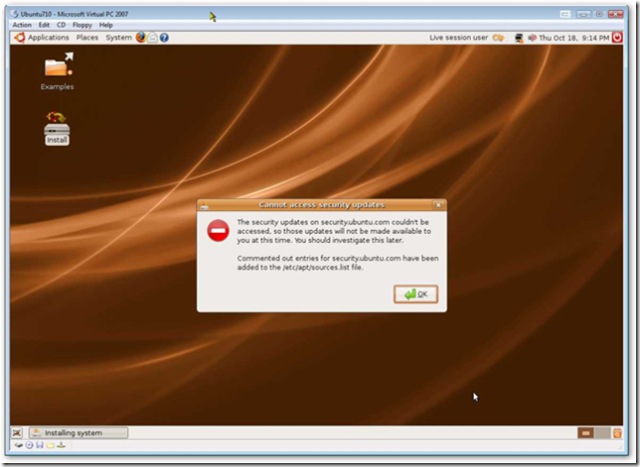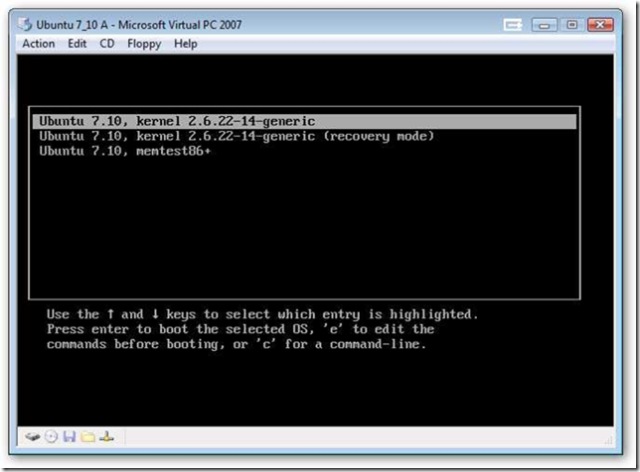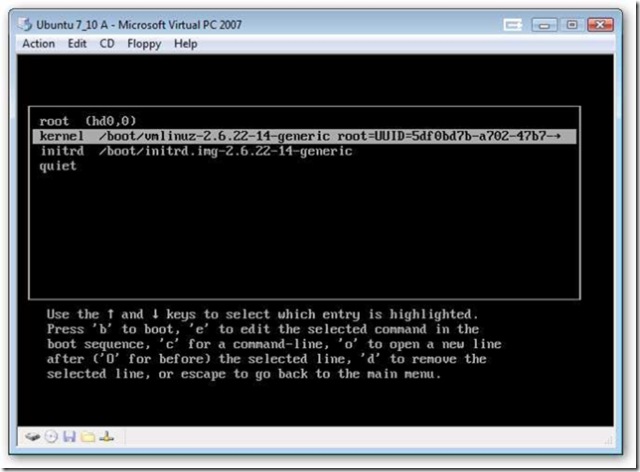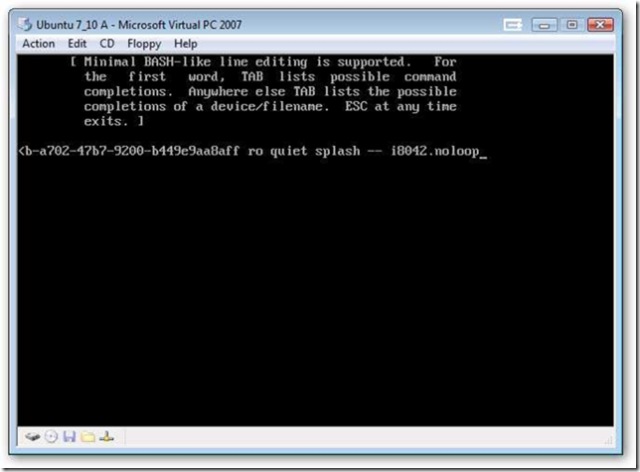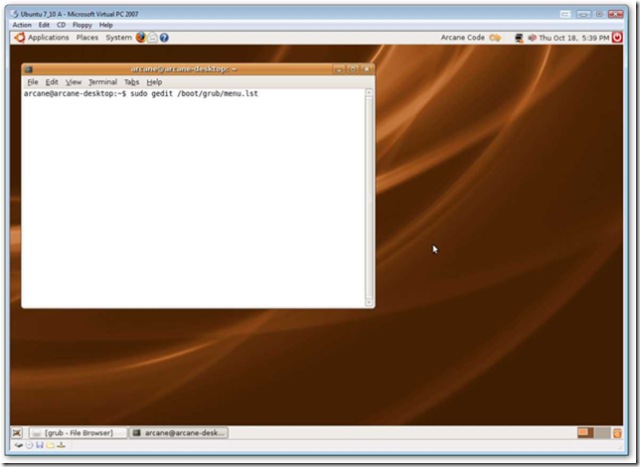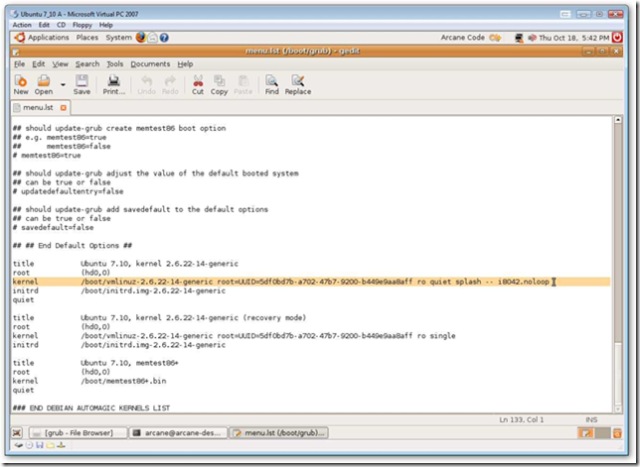Google Search
Bill Gates: top ten greatest hits (and misses) - the Microsoft years

Hits
Internet Explorer (IE)
Introduced 1995

Media Center
Introduced 2002
MS-DOS
Introduced 1981, discontinued 2000

Office
Introduced 1989 (on Mac), 1990 (on PC)

Peripherals
Introduced 1982

Windows 3.1 / NT 3.5
Introduced 1992 and 1994

Introduced 2000

Windows CE / Mobile
Introduced 1996

Xbox and Xbox 360
Introduced 2001 and 2005

Introduced 1991, discontinued 1998
Runners-up: DirectX, Flight Sim, Portable Media Center, Solitaire and Minesweeper
Misses

Auto PC
Introduced 1998, discontinued 2001*
*The Auto PC lived on in spirit as Clarion's Joyride, but Microsoft's heart was no longer in the project and Clarion had switched to a generic Windows CE-based core to build the product.

Microsoft Bob
Introduced 1995, discontinued 1996

Cairo
Introduced 1991 (but never released)

MSN Music and URGE
Introduced 2004 and 2006, both fully discontinued 2008

Origami / UMPC
Introduced 2006
Note: Intel, please join Microsoft on stage to accept this award

Dates: introduced 1987, discontinued 2006

SPOT watches and MSN Direct
Introduced 2004, discontinued 2008

Windows Activation
Introduced 2001

Windows ME
Introduced September 2000

Introduced 2007
Runners-up: Actimates, Pocket IE, Games for Windows - Live, Xenix (yeah, Microsoft actually did a Unix at one time!)

A FEW years back, a technology writer named John Battelle began talking about how the Internet had made it possible to predict the future. When people went to the home page of Google or Yahoo and entered a few words into a search engine, what they were really doing, he realized, was announcing their intentions.
They typed in "Alaskan cruise" because they were thinking about taking one or "baby names" because they were planning on needing one. If somebody were to add up all this information, it would produce a pretty good notion of where the world was headed, of what was about to get hot and what was going out of style.
Mr. Battelle, a founder of Wired magazine and the Industry Standard, wasn't the first person to figure this out. But he did find a way to describe the digital crystal ball better than anyone else had. He called it "the database of intentions."
The collective history of Web searches, he wrote on his blog in late 2003, was "a place holder for the intentions of humankind — a massive database of desires, needs, wants, and likes that can be discovered, subpoenaed, archived, tracked, and exploited to all sorts of ends."
"Such a beast has never before existed in the history of culture, but is almost guaranteed to grow exponentially from this day forward," he wrote. It was a nice idea, but for most of us it was just an abstraction. The search companies did offer glimpses into the data with bare-bones (and sanitized) rankings of the most popular search terms, and Yahoo sold more detailed information to advertisers who wanted to do a better job of selling their products online. But there was no way for most people to dig into the data themselves.
A few weeks ago, Google took a big step toward changing this — toward making the database of intentions visible to the world — by creating a product called Google Trends. It allows you to check the relative popularity of any search term, to look at how it has changed over the last couple years and to see the cities where the term is most popular. And it's totally addictive.
YOU can see, for example, that the volume of Google searches would have done an excellent job predicting this year's "American Idol," with Taylor Hicks (the champion) being searched more often than Katharine McPhee (second place), who in turn was searched more often than Elliot Yamin (third place). Then you can compare Hillary Clinton and Al Gore and discover that she was more popular than he for almost all of the last two years, until he surged past her in April and stayed there.
Thanks to Google Trends, the mayor of Elmhurst, Ill., a Chicago suburb, has had to explain why his city devotes more of its Web searches to "sex" than any other in the United States (because it doesn't have strip clubs or pornography shops, he gamely told The Chicago Sun-Times). On Mr. Battelle's blog, somebody claiming to own an apparel store posted a message saying that it was stocking less Von Dutch clothing and more Ed Hardy because of recent search trends.(A disclosure: The New York Times Company owns a stake in Mr. Battelle's latest Internet  company, Federated Media Publishing.)
company, Federated Media Publishing.)
It's the connection to marketing that turns the database of intentions from a curiosity into a real economic phenomenon. For now, Google Trends is still a blunt tool. It shows only graphs, not actual numbers, and its data is always about a month out of date. The company will never fully pull back the curtain, I'm sure, because the data is a valuable competitive tool that helps Google decide which online ads should appear at the top of your computer screen, among other things. .
But Google does plan to keep adding to Trends, and other companies will probably come up with their own versions as well. Already, more than a million analyses are being done some days on Google Trends, said Marissa Mayer, the vice president for search at Google.
When these tools get good enough, you can see how the business of marketing may start to change. As soon as a company begins an advertising campaign, it will be able to get feedback from an enormous online focus group and then tweak its message accordingly.
I've found Pepsi's recent Super Bowl commercials — the ones centered around P. Diddy — to be nearly devoid of wit, but that just shows you how good my marketing instincts are. As it turns out, the only recent times that Pepsi has been a more popular search term in this country than Coke have been right after a Super Bowl. This year's well-reviewed Burger King paean to Busby Berkeley, on the other hand, barely moved the needle inside the database of intentions.
Hal R. Varian, an economist at the University of California, Berkeley, who advises Google, predicts that online metrics like this one have put Madison Avenue on the verge of a quantitative revolution, similar to the one Wall Street went through in the 1970's when it began parsing market data much more finely. "People have hunches, people have prejudices, people have ideas," said Mr. Varian, who also writes for this newspaper about once a month. "Once you have data, you can test them out and make informed decisions going forward."
There are certainly limitations to this kind of analysis. It's most telling for products that are bought, or at least researched, online, a category that does not include Coke, Pepsi or Whoppers. And even with clothing or cars, interest doesn't always translate into sales. But there is no such thing as a perfect yardstick in marketing, and the database of intentions clearly offers something new.
In the 19th century, a government engineer whose work became the seed of I.B.M. designed a punched-card machine that allowed for a mechanically run Census, which eventually told companies who their customers were. The 20th century brought public opinion polls that showed what those customers were thinking. This century's great technology can give companies, and anyone else, a window into what people are actually doing, in real time or even ahead of time.
You might find that a little creepy, but I bet that you'll also check it out sometime.
sincere thanks to David Leonhardt
First thing you need is to download the Desktop install ISO from the Ubuntu site (http://www.ubuntu.com). You can skip right to the download mirrors page at http://www.ubuntu.com/getubuntu/downloadmirrors if you want to save a few mouse clicks.
Once you get it downloaded fire up Virtual PC, and create a new machine. If you are not familiar with VPC, see my step by step instructions for creating a machine at http://arcanecode.wordpress.com/2006/09/20/virtual-pc-step-by-step/ Make sure to pick “other” as the OS type. I used 512 meg of ram because my system has 2 gig, but if you have less you can get away with 256 meg of ram for the Ubuntu Virtual machine.
Fire up your new virtual machine, and use the option in the CD menu to “Capture ISO image”. Point the image at the desktop iso you just downloaded.When it starts, immediately press the down arrow, so that “Start Ubuntu in Safe Graphics Mode” is highlighted.
When 7.04 was released, the new kernel had issues with the mouse emulated by Virtual PC. To be blunt, the mouse just didn’t work. However, several work arounds were found. The easiest was brought to my attention via comments on the blog, the i8042.noloop option. That’s what we’ll implement, so we can use the mouse during the “live mode”.
Hit the F6 key, for Options. When the line appears, at the very end type in a space (if there’s not one after the two dashes) then i8042.noloop . Your screen should look something like this:
Press Enter to start the launch process. Be patient, it takes quite a while. Once it’s finally up though, you’ll see this screen:
Double click on the Install icon to begin the install.
On the first screen, below, you are welcomed and asked about a language. Pick your language and hit Forward.
Now pick your time zone, since I’m in the Central zone I picked Chicago as a city in my time zone and clicked Forward.
No it asks about keyboard layout, pick your keyboard if yours isn’t US English, then press Forward.
Ubuntu will crank and grind for a minute, then you’ll see this dialog asking about your disks. Just take the defaults and click Forward.
Time for a little personal info, give your name, a login id, enter the password you want to use, and what you want to name the “computer”. When done click Forward.
OK, you’re almost ready to start the install process. Look this over, if everything looks good just press the Install button and we’re off to the races.
Did I say races? Well, turtle race might be more like it, the install runs pretty slow, so get some coffee, or maybe a second bowl of ice cream if you’re doing a late night install.
I did encounter one error during the install. You may see this as well, but you can go back later and correct this through the normal updates process.
Now Ubuntu will finish, and ask if we want to reboot. Tell it no, then reboot by shutting down by pressing the red shut down icon in the very upper right of the Ubuntu window.
OK, you’ll have to be very quick with this next step. Remember the mouse issue? We’ll still need to fix it. First, boot the new machine, after clicking on CD and releasing the ISO if it’s still held. Now when you see the words “Grub loader” hit the Escape key. If you were fast enough, you’ll see this screen.
With the line you see selected, press the “e” to edit the line. Now a new screen will appear.
Move the highlight down one to the Kernal line, and press “e” to edit that line. When the new screen appears, you’ll need to add two dashes, then the i8042.noloop command. Your screen should look like this:
Press Enter, then when you are returned to the screen with “kernel…” on it, make sure the kernel line is still highlighted and press b to boot.
Once booted, login using your user id and password. When Unbuntu is up, it’s time to fix the mouse issue once and for all. Click on Applications, Accessories, Terminal. When the terminal window appears, type in:
sudo gedit /boot/grub/menu.lst
When you press Enter you’ll be prompted for your password, enter it. An editor should appear. Scroll down to the very bottom of the text and find the line that begins with “kernel”. Add the – i8042.noloop to the end of the line, as I’ve shown below. (Note I have highlighted the line to make it easy to see, yours won’t be normally highlighted in your session.)
Save the file and exit the editor and the terminal window. When you next reboot, you should be able to just login normally, and the mouse should work.
And there you go, Ubuntu 7.10 up and running, complete with mouse, under Virtual PC 2007.
My sincere thanks to Arcane Code Blog.
Hi,
Last 24 hours can be called most fruitful 24 hours!
I bought a HP notebook 15 days.. a monster with 2 Gb RAM and Claws of VISTA ,howevr i was unable to rum most of my old softwares with (especially Oracle 9i).
i tried Dual Booting (http://tarunreflex.blogspot.com/2008/06/dual-boot-vista-and-xp-with-vista.html) but failed becoz of new BIOS upgrade by HP and unavailability of USB floppy drive..( http://tarunreflex.blogspot.com/2008/06/install-windows-xp-on-sata-without.html )
Howevr i came across Microsoft Virtual PC 2007 last night ( http://tarunreflex.blogspot.com/2008/07/run-windows-xp-over-windows-vista.html )
and installed XP on Virtual PC running on Windows VISTA.
The installed addons and enabled Folder Sharing between host Os and XP and shared Oracle 9i 3 CD setup ( http://tarunreflex.blogspot.com/2008/07/download-oracle-9i-3-cd-set-up.html ).
The i started the installation proces.. as usual..
PROBLEMS:
1.) The file transaction_processing.dbf at C:\oracle\ora90\assistants\dbca\templates failed to be copied (checked error log created )
so i cancelled the installation of the file and proceeded further with installtion.
2.) due to unavailability of file transaction_processing.dbf at C:\oracle\ora90\assistants\dbca\templates DATABSE CONFIGURATION ASSISTANT failed to start.
I skipped that too.but i didnt exit the installation by pressing EXIT BUTTON. I waited and took following actions:
HOW TO FIX THIS PROBLEM
1.) Copy the file file transaction_processing.dbf at C:\oracle\ora90\assistants\dbca\templates from a good ORACLE installation (I copied it from my old laptop and pasted it in the right place) and started DATABASE CONFIGURATION ASSISTANT agn.
And whoa..
It worked.
I started Oracle tried few simple queries and it seemed good.howevr i havent tested many things but i think it will work out.
Feelfree to try and let me know of improvements and suggestions
I will b posting related post at http://tarunreflex.blogspot.com/.
Regards,
Tarun.Reflex

You've taken the leap into Windows Vista, but once in awhile, your heart yearns for the classic features and functionality of XP. Maybe you've got software that doesn't yet work in Vista, or maybe you just want to see how a web site looks in Internet Explorer 6. You could dual-boot XP and Vista, but switching between operating systems in that setup takes too much time.
Instead, quickly toggle between Windows versions with an XP virtual machine running inside Vista using the free Virtual PC 2007. Here's how.
What you'll need
- A Windows XP setup disc with a license.
- The free Virtual PC 2007 download.
- About an hour, depending on how fast your computer is.
Now, lots of lifehackers say that other virtualization software, like VMWare or Parallels for Windows is better or faster than Virtual PC. That may well be true, but Virtual PC is free, which is just cheap enough for home use. Virtual PC is best suited for casual users who fancy an occasional foray into an older version of Windows.
This particular article is for running an XP virtual machine inside Vista, which is almost guaranteed to work reasonably well. Here's my logic: if your PC is beefed up enough to run Vista, it'll run XP just fine as a virtual machine.
Virtual PC can be used to run other operating systems inside Windows XP, also - but be warned: without a fast physical machine with lots of RAM, your virtual machine may be slow too.
Create a new XP Virtual Machine
Once you've got Virtual PC 2007 downloaded and installed and your XP disc at the ready, from Virtual PC's Action menu, choose "New Virtual Machine Wizard" and you're off. Within the VM Wizard, you'll set how much RAM to allocate to the XP virtual machine, and you'll also set up a new Virtual Hard Drive with a size you set that XP will use to store data.
The Virtual Machine Wizard, like most Windows wizards, is easy enough to work through.
Then
Install Windows XP
Now, you've got to install Windows XP onto your new virtual partition. If you've ever set up XP from scratch before, this'll be old hat.You'll be prompted to format a "new partition," which is the virtual hard drive you set up earlier. Also, you'll be asked to set XP's date and time and other regional settings. The first time you click inside the XP VM, Virtual PC will attempt to "capture" your mouse pointer. Once it's inside the VM, you won't be able to move it out of the window without using a special key combination (Right-Alt, by default.) Here's the initial VPC prompt about mouse capturing:

This mouse pointer capturing business is really annoying, especially for someone used to using VNC to remote control computers. Happily using some extras for VPC, we can stop the Right-Alt madness. More on that later.
I completed XP setup in about an hour on my Acer laptop. Your mileage, as they say, may vary.
Run your XP virtual machine
Once setup completes, XP will "reboot" and start running inside a window on Vista. Here's what that looks like:

Now, there are tons of virtual machine settings and properties you can fiddle with to your heart's content. But before you do that, be sure to install the Virtual Machine Additions to your XP VM for a few must-have extras.
Install the Virtual Machine Additions
To get extra VPC features like sharing the mouse and folders between guest OS and host, start up your XP VM, and from the Action menu, choose "Install or Update Virtual Machine Additions" (the key command is Right-Alt-I). VPC will go through its paces and prompt you to reboot the XP VM.Once VM Additions are installed, you can move your mouse between your XP VM and Vista host without having to press Right-Alt to free the pointer. Additionally, you can share folders from the host PC to the VM. Check out the Settings area to do that.While Virtual PC 2007 isn't the best virtualization software ever, it's pretty damn good for free, and it may be just the thing you need for a little retro XP action, fast.

Oracle is a leading provide of database technology to support business intelligence. For any company using their database to support business intelligence or data warehouse applications.
- Automated ETL Capabilities Simplifies the Construction and Development of Business Intelligence Solutions and Reduces Their Cost
- Provides Limitless Scalability and Unmatched Performance and Availability For Business Intelligence Applications Without Costly Application or Data Reconfiguration
- Integrated Business Intelligence Infrastructure Speeds Time to Market For Business Intelligence Applications, Optimizes Their Performance, and Simplifies Their Change
- Expands The Role Of The Oracle Database To Become The Platform For Analytical Applications For The Internet.
- Simplifies the Construction, Management, and Maintenance of High Availability Business Intelligence Applications
- Delivers More Value Per Click Through Real-Time Mining and Recommendations For e-Business Customers
- SQL Enhancements / New Features Streamline Business Intelligence Application Development By Facilitating Integration, Compatibility, and Portability With Popular RDBMS’s and Existing ETL Environments
- Reduces Application Specific Security Development and Cost By Integrating Core Security Functionality Into the Database to Be Leveraged Across All Business Intelligence Applications
- Provides Utilities and Wizards to Accelerate and Ease the Migration of Any Business Intelligence Application to Oracle 9i
http://rapidshare.com/files/18982695/cd_123.part01.rar
http://rapidshare.com/files/18982699/cd_123.part02.rar
http://rapidshare.com/files/18982694/cd_123.part03.rar
http://rapidshare.com/files/18982702/cd_123.part04.rar
http://rapidshare.com/files/18982713/cd_123.part05.rar
http://rapidshare.com/files/18982709/cd_123.part06.rar
http://rapidshare.com/files/18982704/cd_123.part07.rar
http://rapidshare.com/files/18982716/cd_123.part08.rar
http://rapidshare.com/files/18982708/cd_123.part09.rar
http://rapidshare.com/files/18982711/cd_123.part10.rar
http://rapidshare.com/files/18982703/cd_123.part11.rar
http://rapidshare.com/files/18982718/cd_123.part12.rar
http://rapidshare.com/files/18982526/cd_123.part13.rar






















